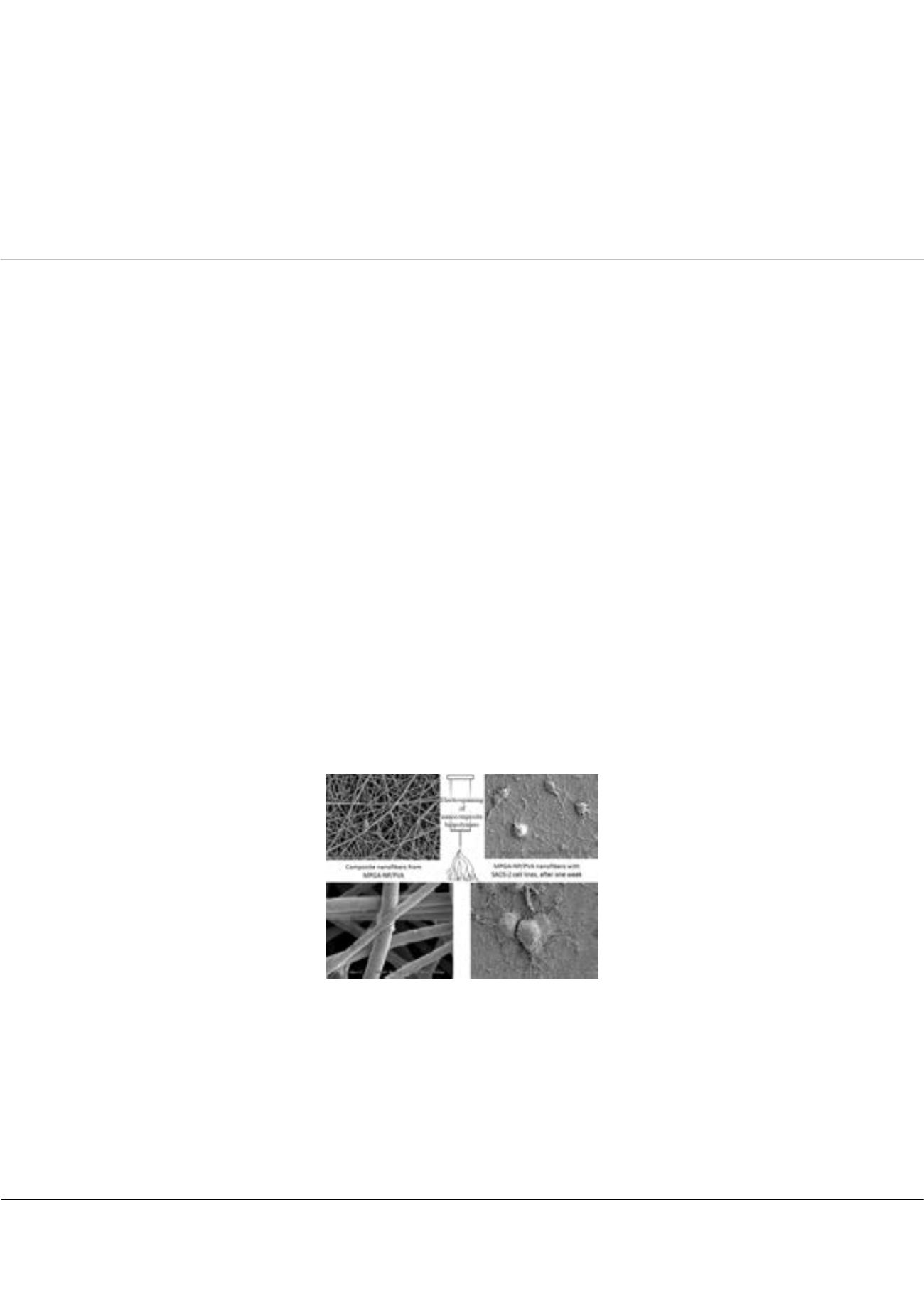

Page 87
conferenceseries
.com
Volume 8
Journal of Biotechnology and Biomaterials
ISSN: 2155-952X
Biomaterials 2018
March 05-06, 2018
March 05-06, 2018 | Berlin, Germany
3
rd
Annual Conference and Expo on
Biomaterials
Biodegradable polymer based electrospun nanofibers for dental applications
Jozsef Bako, Farkas Kerenyi, Lajos Daroczi
and
Csaba Hegedus
University of Debrecen, Hungary
Electrospinning is a versatile method for fabrication of submicron sized fibers from biopolymers, ceramics and composite
materials. The dental application possibilities of these nanofibers are intensively research areas on the fields of tooth or
pulp regenerations, prevention of dental caries, or drug delivery systems. Biopolymers can facilitate the elasticity of created
structures, and ensure the similarities to the extracellular matrix. The tailoring of the diameters of the fibers, and pore sizes of
the structures ensures the optimal conditions for the proliferation and differentiation of cells. The delivery of biological active
ingredients, factors, or drugs can achieve fast and supported regeneration. Composite materials give possibly of adjusting
physical, biological, or release properties. Nanofibers combined with inorganic ceramics, or polymers with nanoparticles can
create functional materials for the speed up wound healing, or osseointegration processes.
Polymer solutions were created for electrospinning process from Poly-vinyl-alcohol (18-88 Ph, Eur.Merc) (PVA) in 10 w/w%
and 50% precrosslinked, and 50% methacrylated-poly-γ-glutamic acid nanoparticles (MPGA-NP) in 15w/w%. Irgacure 2959
1w/w%was added to the composite as photoinitiator. Nanofiber fabricationwas performed byNanospinnerNS1 electrospinning
device (Inovenso). The created fiber matts were phtopolymerized by Bluehase 20i (Ivoclar Vivadent) dental lamp for 60sec, and
the biocompatibility properties was investigated by Saos-2.
The diameters of created MPGA/PVA nanofibers were between 82.1-149.2 nm with the average of 120.7±17.5 nm. The
crosslinking of the fibers by post photopolymerization was successful, and the fibers not dissolved during the one week cell
proliferating test. The good biocompatibility of the created electrospun nanofibers was proved by the presence and proliferation
of Saos cells.
This nanoparticles in the nanofibers construction allow and enhance the control of different drug releases.
Figure 1: Scheme of the interaction of cells with biomaterials
Recent publications
1. Zafar M, Najeeb S, Khurshid Z, VazirzadehM, Zohaib S, Najeeb B, Sefat F (2016) Potential of Electrospun Nanofibers for
Biomedical and Dental Applications Materials (Basel). 26;9(2). pii: E73.
Jozsef Bako et al., J Biotechnol Biomater 2018, Volume 8
DOI: 10.4172/2155-952X-C1-088
















